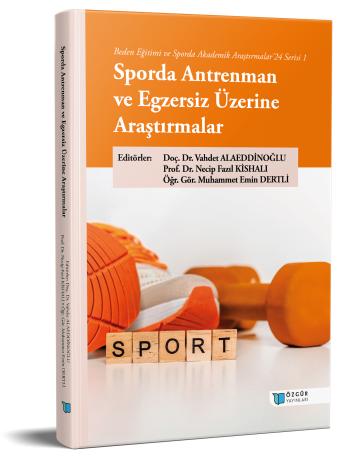
Hypertension and Exercise
Chapter from the book:
Alaeddinoğlu,
V.
&
Kishalı,
N.
F.
&
Dertli,
M.
E.
(eds.)
2024.
Research on Training and Exercise in Sport.
Synopsis
Hypertension is a disease that increases mortality rates from cardiovascular disease globally and is recognized as an important public health problem. Lifestyle changes, especially exercise, play an important role as a non-pharmacological treatment method in treatment and control processes. Although the hypotensive effect of exercise varies depending on various factors such as age, gender, genetic characteristics, and current health status of individuals, it has been shown that it can provide significant reductions in blood pressure in a large population. The mechanisms of exercise in regulating blood pressure include neurohormonal and vascular adaptations, reduction of sympathetic nervous system activity, improvement of endothelial function and regulation of antioxidant mechanisms. In addition, regular exercise improves vascular tone by increasing nitric oxide production, regulates shear stress and promotes vascular health.
The most effective types of exercise in the management of hypertension include aerobic activities, endurance exercises and resistance training. Aerobic exercises include low or moderate intensity activities that can be performed most days of the week and significantly reduce blood pressure. Especially activities such as walking, cycling and swimming are ideally recommended for hypertensive individuals. Resistance exercises provide small but significant reductions in systolic and diastolic blood pressure as well as increasing muscle strength. Performing such exercises with low weight and high repetitions in station work (circular work) format increases both safety and provides effective results.
Individualized design of exercise programmes is of great importance in the treatment of hypertension. Supervised or home-based exercise programmes provide a safe and effective method of non-pharmacological control of hypertension. Such programmes not only improve the quality of life of individuals but also reduce cardiovascular morbidity and mortality rates. Integration of exercise into treatment processes contributes to the adoption of long-term healthy living habits by guiding both health professionals and individuals.

